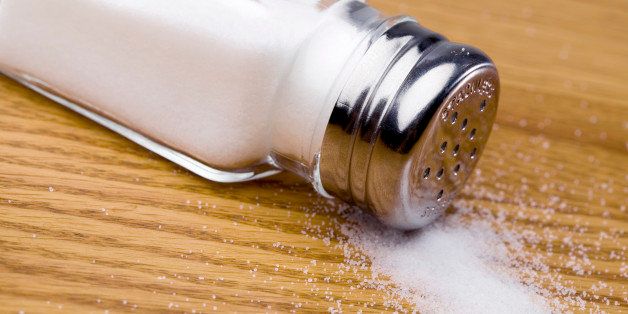
According to a new report from the Centers for Disease Control and Prevention (CDC), Americans are still eating too much salt. The CDC says that 9 in 10 Americans, or 90 percent, consume more sodium than the recommended amount. In the Western diet, most of the sodium we consume comes from the salt. This news is alarming because as everyone should know by now, too much salt in our diets raises our risk for heart disease and leads to potentially life-threatening conditions including high blood pressure, heart attack and stroke.
The report says that more than 90 percent of children and 89 percent of adults in the United States consume more than the recommended limits for sodium. This does not include salt added to food at the table, and the statistics do not regard factors such as race, age, gender, or having certain health conditions such as high blood pressure. This means that excess salt consumption was not a problem among a specific group, but among all groups.
According to the Dietary Guidelines for Americans for 2015-2020, people over the age of 14 should consume no more than 2,300 mg of sodium per day. This is equivalent to one teaspoon of salt. And for those who are younger, they should consume even less.
Researchers at the CDC analyzed data regarding how much sodium Americans are eating from the 2009-2012 National Health and Nutrition Examination Surveys (NHANES), which included over 15,000 people. Not only did they find that consuming too much sodium was a problem, but also that it was a problem among all groups of people regardless of their race, age, gender, and whether they have certain health conditions. What did differ among groups was the amount of excess sodium consumption.
The results showed that among genders, more men (98 percent) consume too much sodium compared to women (80 percent). Among racial groups, 90 percent of white adults consume too much sodium compared with 85 percent of black adults. They also found that while sodium consumption exceeded the recommended limits in all age groups, those between the ages of 19 and 50 exceeded the recommended limit the most.
What was also significantly distressing is the amount of people that consumed too much sodium and who were already had risk factors and were at a higher risk for heart disease and stroke. For example, among those who were over 50 years of age, black people and those who already had high blood pressure or were close to being in the pre-hypertensive stage were found to consume too much sodium. Overall, more than 3 out of 4 consume more than the recommended limit of 2,300 mg of sodium per day.
The new report by the CDC is certainly alarming because they, as well as other major health organizations, have been warning people about the dangers of consuming too much salt or sodium for years now. Unfortunately, there has not been much change in almost ten years. This is largely due to the fact that the food industry makes it difficult for people to cut back on salt. It is true that ultimately people must have self-control and know what they should and shouldn't be eating, but this is much easier said than done.
Most of the sodium that we consume comes from eating out at restaurants, and purchasing processed and pre-packaged foods. Therefore, what can be done to help this problem is those in the food industry can reduce the amount of sodium that is produced and prepared for public consumption. This way, people actually have the option of not being forced to eat foods high in sodium. Even the CDC says there is a need to lower sodium intake in the US population by gradually reducing levels in the nation's food supply. Once this happens, we will at least be on the right path to helping people reduce the amount of sodium people consume, and potentially saving their lives.
Reducing sodium is a crucial step people can take to reduce their risk for heart disease and stroke. Currently, about 1 in 3 adult Americans (around 70 million people) suffer from high blood pressure. What's even more alarming is that only about 52 percent of these people have their high blood pressure under control. Heart disease and stroke are leading causes of death among Americans compared to any other disease. In the United States, heart disease kills more than 800,000 people each year.
Ways to reduce sodium intake
•Aim to cook food at home. By cooking from scratch, you at least know exactly what's in your food.
•Avoid packaged and processed foods as they are high in sodium. If you must, at least choose products that are sodium free or low in sodium.
•When eating out at restaurants, request that your food be prepared without added salt. Restaurants often use lots of salt when cooking.
•At any dinner table, substitute salt for alternatives such as herbs, spices, or some other salt-free product. These can make your meals taste just as good without the added sodium.
•At the grocery store, make sure to check all food labels for sodium in all its forms. Sodium is often hidden within other ingredients. Do your research.